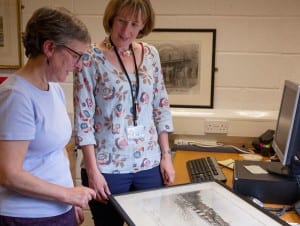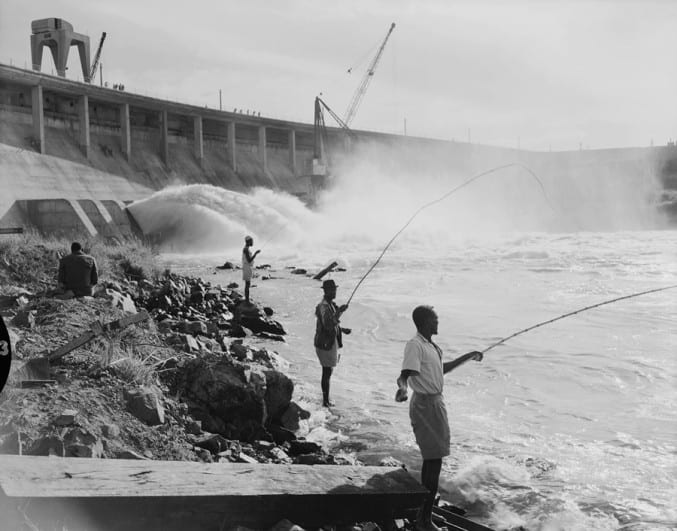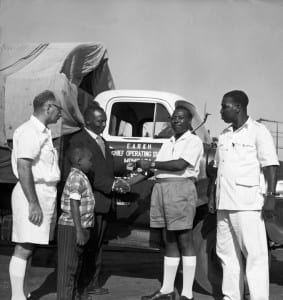Exploring Empire: the photographic collections of the former British Empire & Commonwealth Museum
Posted on by Fay Curtis.

Jayne Pucknell and Nicky Sugar, BECC project archivists
A new project at Bristol Archives will open up an internationally-important collection of colonial photographs for research and learning. Nicky Sugar, one of two project archivists, has just started work:
I joined the archives team in June 2015, on a two year project to catalogue the most significant photographic collections from the former British Empire and Commonwealth Museum (BECM).
The ‘Exploring Empire’ project was awarded funding by the National Archives Cataloguing Grants Programme at the end of last year, in recognition of the importance of these collections for understanding life in the colonial era.
The BECM collections were transferred to Bristol Museum, Galleries & Archives in 2012 and the archive materials are now in the care of Bristol Archives. These include an estimated 500,000 photographs, dating from around 1870 to the 1990s, which have been in storage until now.
The first job for me and my colleague Jayne Pucknell (who starts work later in August) is to move the photographic collections from the museum store to Bristol Archives so that work can begin in earnest. This is no easy task since the images are stored in a mixture of boxes, plan chests and filing cabinets and will need repackaging in archival quality containers. So far, with the help of record office colleagues, we have moved over 200 boxes!

Fishing at the Owen Falls Dam, Uganda, 1954
Much of the material has never been catalogued and none of the catalogues meet current archival standards. We’re therefore planning a large scale audit of the collections before we start cataloguing, as currently we are not entirely sure what material we have – a situation which is slightly daunting but also quite exciting!
After the audit is complete, we’re aiming to produce high quality catalogues, according to current archival standards, for the collections which are most likely to be of interest for research, exhibition and publication.
As for my first impressions? These days we’re so used to digital cameras on every cheap mobile phone that we can forget how few photographs were taken in the early 20th century, particularly overseas. The stories these pictures tell really are unique, and I find that quite awe-inspiring.

Handing over keys to a new truck driver: publicity photograph from the East African Railways and Harbours Administration, Kenya, c1960
The photos in the BECM collection cover every part of the former Empire and Commonwealth, from Aden to Zanzibar and Bermuda to Burma. They show stunning scenery and early infrastructure such as the building of railways; historical events have been captured and people from all walks of life are represented. If there are any dull photos among them, I certainly haven’t come across them yet!
As well as being fascinating, the collection provides many opportunities for learning, owing to the range of different perspectives it shows on colonial life. With so much work needed to create access to the collection, it will be some time before we can make the photographs available for research. However, I believe they deserve to be accessed by a wide audience, and I’m really excited to be playing a part in bringing that about.
If you have any queries about the project, please contact Bristol Archives
One comment on Exploring Empire: the photographic collections of the former British Empire & Commonwealth Museum
To whom it may concern,
For some time I have been wanting to pursue a research project looking at the brief manifestation of the British Empire and Commonwealth Museum. What is the current state, rules ans regulations concerning the archives, and the material regarding the conceptualization of the museum, administrative papers, etc…
Any information would be greatly appreciated.